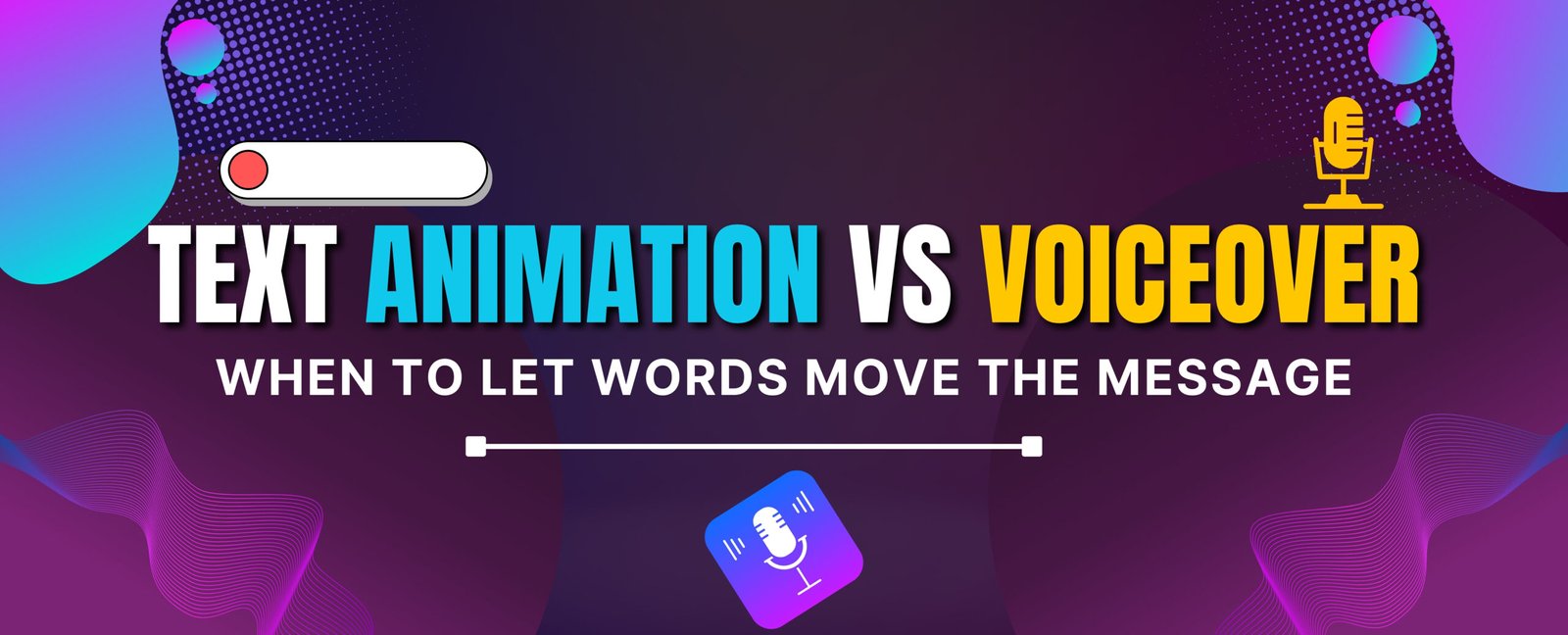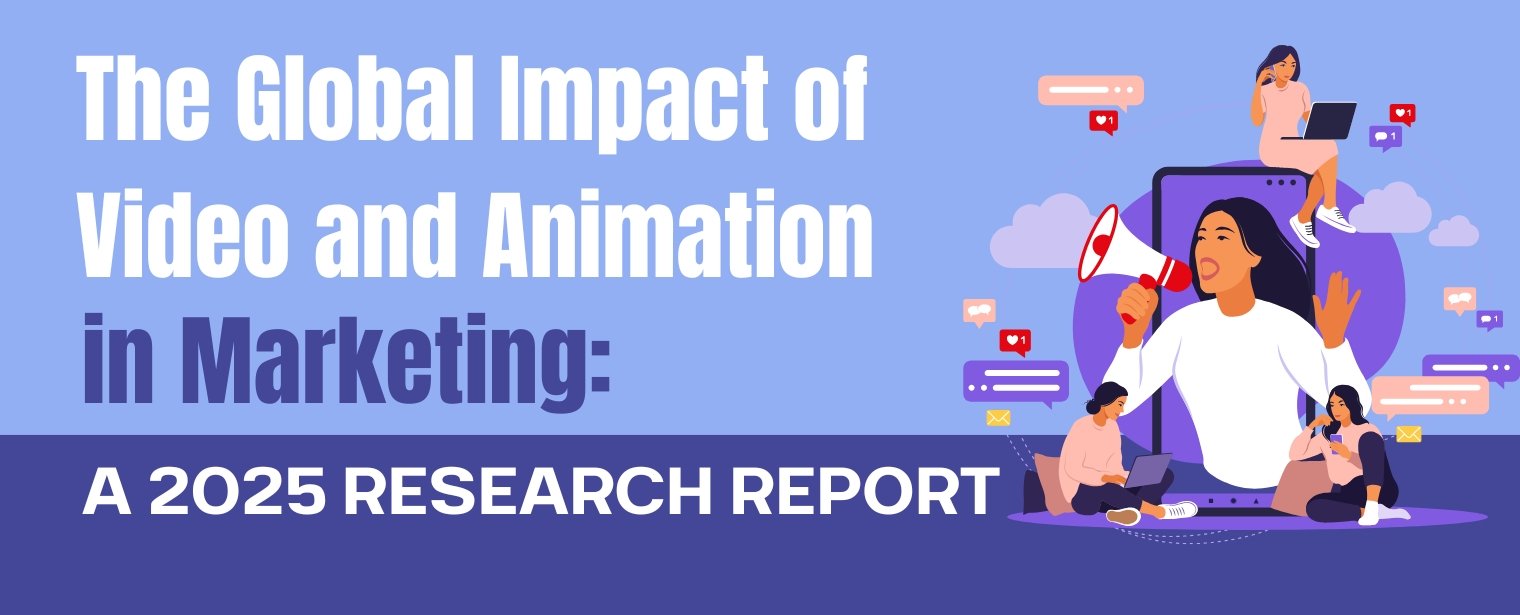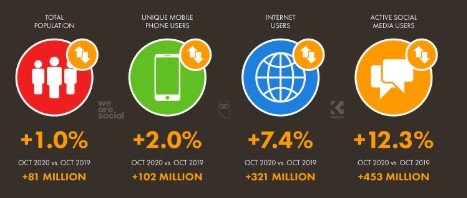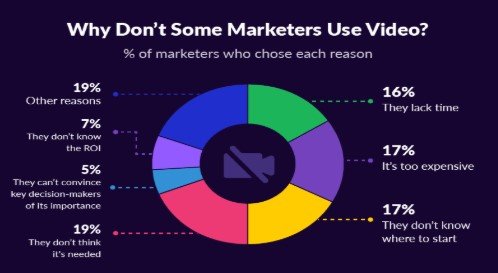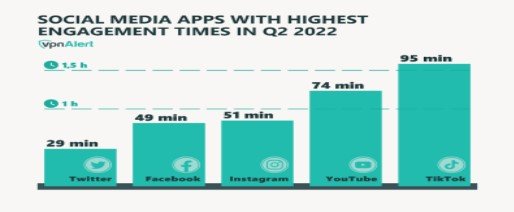Introduction
Whenever the creative team in my animation video production company creates an animation video for product demos or service promotion, or any other ad creatives, every team member becomes concerned over whether to use only voiceover or only animated text overlays with nice background music or both.
The choice between text animation and voiceover often boils down to your audience. There is the constant struggle of figuring out who the audience is and how they would love to watch the video for better relatability.
Be it entertainment, eLearning, manufacturing, technical or any other sector, the question will always depend on the viewer’s perspective. As around 70% of viewers tend to watch your video on their mobile phones, it seems tricky now to include only voiceover or only animated texts.
I have presented in this blog a few good reasons to understand when you should go with only one option and when to use both. At the end of this blog you will have that clarity you landed here for.
The Power of Text Animation
Most video creators select text animation for brief moments when they need to grab the viewer’s attention. The majority of social media viewers come across animation text footage in their video ads with big, displayed letters that scroll across the screen. The animated text automatically demands your attention by needing only passive observation from readers. Having text animation in your video, anyone can understand its message immediately, even without sound, just like this video which we had created to approach busy founders.
Research indicates that viewers utilize their mobile screens with audio off 85% of the time during their video sessions. The statistics about how people watch mobile content with no sound threaten any content that depends only on spoken narration.
So, what’s the solution? Text animation. Text animation delivers exceptional outcomes in specific cases of communication. Promotional videos produced by video companies use text animation to deliver short and intriguing content for their viewers. The videos present significant takeaways rather than complex explanations to deliver sharp pieces of information that viewers find arresting.
Animated text provides outstanding performance in social media spaces because the platform automatically plays videos when users scroll down their feeds. Your video remains easily understandable even when there is no sound because text animation serves as a communication tool for viewers who need to understand without activating the play function. Through text animation, social videos become accessible to viewers who opt for silent notification settings on Facebook and Instagram.
The Case for Voiceover Narration
Text animation works efficiently yet voiceovers become exceptional in specific situations especially in building relationships with viewers. Watching a commercial with a voice-over presentation brings you through product specifications while another voice narrates moving stories. Hearing an engaged voice serves to expand content meaning and humanize its delivery.
Breaking Down Complex Information
Voiceover narration serves as a solution to break down complex or complicated material in ways viewers understand better. Viewers find it less complex to understand information when a speaker provides explanations during tutorials or product demonstrations. A voiceover adds both visual explanations alongside directional guidance to every section of the content.
In this 2D animation video we explained ethanol-blended petrol, which would not have been possible without including voiceovers.
Connecting Emotionally with Your Audience
A voiceover presents its unique beauty when it succeeds in triggering emotional responses. The way a voice performs its speed and accentuation creates an emotional bond which cannot be achieved through static text animations. Brand storytelling and testimonials benefit significantly from a timely voiceover because it allows content to reach emotional depths that make everything feel more personal.
Creating a Seamless Narrative Flow
The use of voice overs ensures the smooth transition of content throughout a whole storytelling experience. A voiceover delivers continuous guidance through the narrative because it does not stop as you scroll through different slides like text animation does. Story-driven content heavily depends on pacing and structure so having a voiceover becomes crucial.
We crafted a structured narrative flow for this promotional video for Car Car’O’Bar where the target audience got to relate with their struggles and find the solution right away.
Strengthening Your Brand Voice
Brand voiceover narration acts as a key element for multiple brands that aim to create a consistent and distinctive brand identity. A voiceover selection determines the appropriate brand atmosphere and contributes to an integrated brand identity through its professional or friendly tone. A voiceover gives your content valuable consistency, which enables your material to maintain continuity between different video presentations across multiple platforms.
The voiceover in this animated video for Darzee Ortho Mattress helped in making their brand voice more stronger.
Working in Noisy Environments
The video requires visual presentation in locations where sound capabilities run ineffective such as exhibition galleries and high-traffic environments. Voiceover narration becomes insufficient for practical video use in particular circumstances. The use of voiceover appears suitable when videos will primarily show in areas with controlled environments such as office settings. The voiceover feature ensures both viewer attention and essential information delivery.
When You Should Use Both
The ideal solution requires implementing voiceover narration together with text animation. The fusion of voiceover narration with text animation allows you to present visual text clarity while bringing personalisation through spoken narration. Using this method delivers enhanced reinforcement because it allows you to present information through multiple perspectives.
A video lesson or marketing production benefits from animated texts when combined with audio narration to support diverse audience reading and listening preferences. The learning style of people differs between reading materials and auditory-based information. Your content becomes more inclusive together with being more engaging through this combination.
In this motion graphics video for CEED India, we included texts along with the voiceover, so that viewers can watch the video in noisy surroundings, without even opting to press on the ‘subtitles’ button.
It improves accessibility. People who prefer reading will look at the text, yet others can listen to the voiceover. Your content becomes more adaptable due to this balanced approach.
Users watching your video content across various networks will find value in using text effects together with voiceover narration. The adaptive feature allows the video content to function seamlessly across all platforms, including mobile and desktop, and in noisy settings like trade shows.
Key Considerations When Choosing Between Voiceover and Text Animation
When deciding whether to go with text animation, voiceover, or both, there are several important factors to keep in mind:
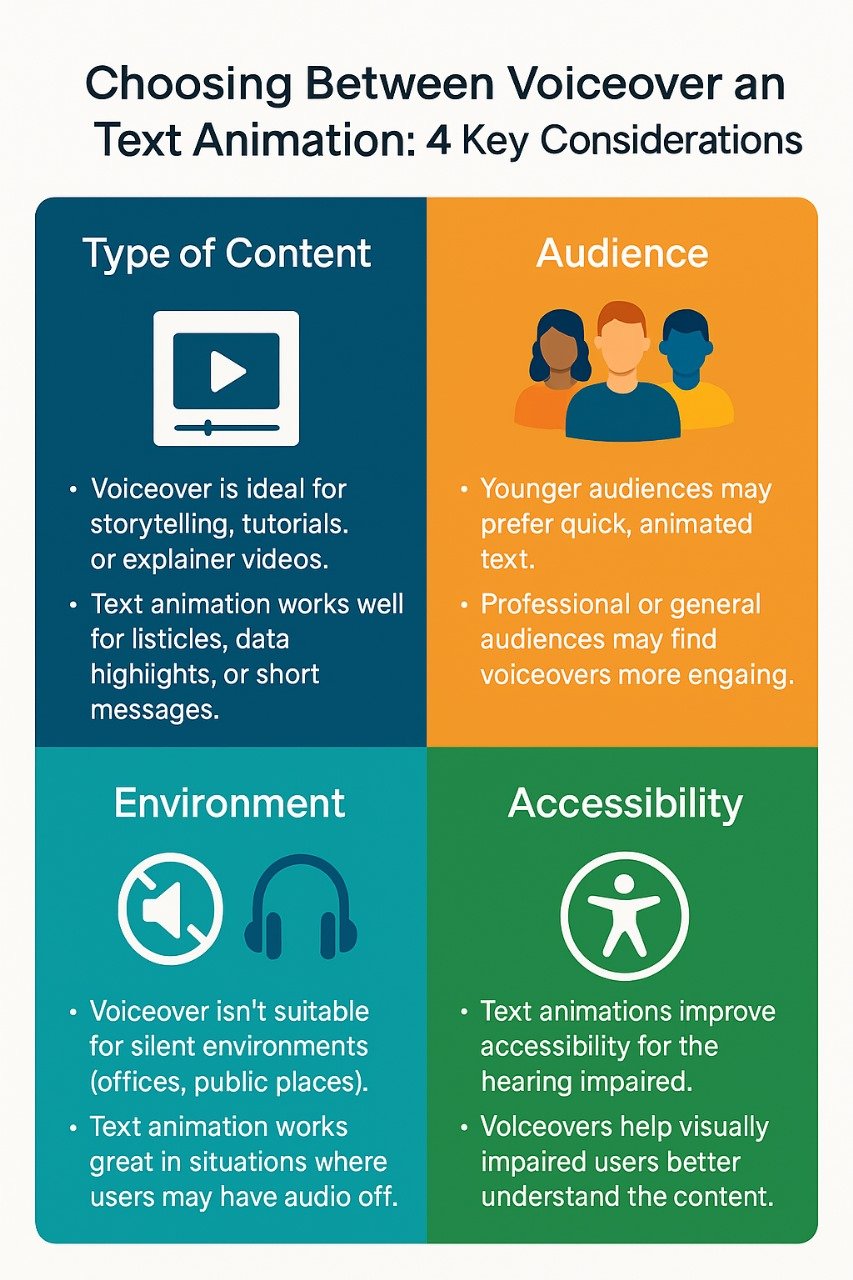
- Type of Content: If your content is simple, short, and visually driven, text animation might be all you need. However, if your message requires context, depth, or a personal connection, you’ll want to lean toward voiceover.
- Audience: Think about how your audience is consuming the content. If they’re on their phones scrolling through social media, text animation may be the way to go. If they’re watching at home or in a professional setting, a voiceover might be a better fit.
- Environment: Will your video be played in a noisy environment, like a trade show? If so, text animation will likely make a bigger impact than a voiceover.
- Accessibility: By combining both voiceover and text animation, you open up your content to a broader audience, including those with hearing impairments.
FAQs
1. Which is better for video content: text animation or voiceover?
It depends on the content and goals. Text animation works well for quick, visual messages, especially on mobile. Voiceovers are great for storytelling, explaining complex information, and creating emotional engagement. Often, a combination of both is the best approach to cater to different learning preferences.
2. How does adding a voiceover improve video engagement?
Voiceovers bring a personal touch, guiding viewers through the content with tone and pacing. They are especially effective for conveying emotions, making a deeper connection with the audience, and ensuring complex information is communicated.
3. Can I use both text animation and voiceover in the same video?
Using both text animation and voiceover can be highly effective. It allows you to reinforce your message visually and emotionally, catering to different audience preferences. This combination also makes your video more accessible, whether viewed with or without sound.
4. When should I use text animation instead of voiceover?
Text animation is ideal when you want your message to be understood without sound, especially for social media, mobile videos, or noisy environments. It works well for short, straightforward content or when visual clarity is key without the need for a detailed explanation.
Conclusion
Deciding between text animation in your project versus a voiceover narration remains simple when you consider your content and audience needs. Your decisions rely on knowing your material while evaluating who views it together with the message you intend to deliver. The right video approach depends on your content needs which a professional video production company will help you determine between text animation or a voiceover narrative.
The essential requirement for success rests in having clear goals. To create a powerful visual impact you should consider using bold text. Your video content requires voiceover to present a detailed story to viewers. As a solution you should choose to integrate both approaches because this combination can help you achieve your desired results.
The message remains the essential element above everything else. Choosing text animation with voiceover or harmonising these elements produces the best results because they activate your message to reach audience members effectively.

By day I create engaging content along with infusing high-volume, low-competition keywords strategically so that it gets loved by you and Google Crawler. Off the clock? I scroll for fresh ideas. (Don’t judge, gotta fuel the creativity!)

